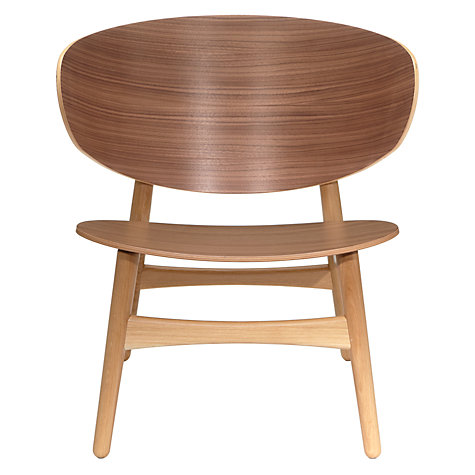In an era when it looked like the dusty old department store was a dinosaur that had outlived its usefulness, it has come as a pleasant surprise that some of these institutions are taking on specialist stores and online retailers - not only in fashion where they have long created interesting low-cost designer ranges, but also in furniture and accessories for the home.
A "designer" tag on the homewares and furniture floor now means much more than just a glass cabinet full of Alessi products, an Eames lounger and a Barcelona chair. Department stores are commissioning exclusive pieces from both big names and lesser known young designers in a serious attempt to lure the design conscious shopper back into their stores. And it isn't stopping there. This year marks the 150th Anniversary of John Lewis in the UK and to mark the occasion not only is there a swanky book; A very British revolution: 150 years of John Lewis but also special limited edition products along with scores of established products offered in new colourways.
On a recent visit to London I was flabbergasted to see that John Lewis were reissuing one of my favourite pieces by the great Danish designer, Hans J Wegner - the 'Shell' chair (and its matching sofa) from 1948. Now, I would not have been surprised if this had been done by a Danish brand that already manufactured Wegner pieces, like Carl Hansen, Fritz Hansen or PP Møbler but a department store that I had previously only ever visited to purchase a toaster or kettle? Wow, I was totally blown away. Not only is it exciting that this beautiful design will be available again but at just under a thousand pounds it is less than half what one might expect for a similar chair from the prestige labels. Thankfully it's not a case of the quality being sacrificed to achieve the low price - the range of five Wegner designs are manufactured exclusively for John Lewis in Denmark.
The other Wegner pieces reissued by John Lewis are equally as good. The 'Butterfly' arm chair shown below dates from 1977 and was originally manufactured by Getama, as was the 'U' table from 1970. The 'U' chair is yet another example of Wegner's determination to refine general concepts. In this instance the chair strongly resembles models such as the PP 201 designed in 1969 for PP Møbler but with a frame not unlike that used on his CH35 chair for Carl Hansen from 1959.
While these classic reissues are a interesting new departure for John Lewis and obviously timed to coincide with their 150 years celebrations, the department store is also commissioning ranges designed by young designers including Bethan Gray and Says Who studio. Gray, who has designed successful living and dining room items for John Lewis in the past, was asked to design a bedroom range with a similar emphasis on solid timber. The resulting collection called 'Genevieve', offers a touch of glamour with brass handle detailing and even a splash of marble. The range comprises of two chest of drawers, a dressing table, stool, ladder, bedside table, hanging rail and upholstered headboard. All the timber is FSC oak while the headboard is in a wool and viscose mix.
While John Lewis has surprised everyone with their Wegner reissues, it's Heal's that have really shaken up the department store furniture and lighting offering. Not only does Heal's stock established designer brands like De La Espada, Ercol, Kartell, Ligne Roset, Verpan and Vitra but it is also exclusively representing some extremely small outfits such as Atelier Rick Tegelaar from the Netherlands and Colonel from France. Mixed with their own label furniture and lighting products that are inspired by current trends and which sell for very attractive prices, the store is beginning to recall it's glory days before it was bought out in the early 1980's by Storehouse plc. Since 2001 the company has been owned by Whittington Investments Limited with a stated desire to maintain the unique character of Heal's. In recent years this has meant a move away from the largely safe, softly modern look the brand pursued in the 90's, toward a broader mix of modern with a greater emphasis on younger, designer-led pieces.
As part of the Heal's Discovers collection, an initiative started 10 years ago to help graduating design students enter the industry, the department store has launched a number of interesting new products by Tom Parfitt, Luscombe & South, Sam Lloyd and Ester Comunello. These more individual pieces join bigger commissioned ranges by Koji Katsuragi and Mathers & Hirst called 'Koji' and 'Whitstable' respectively and compliment non-exclusive British-made items by the Galvin Brothers and and Gavin Coyle.
New additions in lighting also include the beautiful handblown czech glass pendant lights of Pia Wüstenberg along with new designs from Terence Woodgate, Tom Dixon, Innermost and Brokis.
You might be wondering why more department stores don't venture down this road and bring individuality to their furniture, lighting and accessories offerings and the answer is quite simple. It takes time, money and an excellent buying team to source the right products and discover new talent - something not every department store is prepared to undertake.
For those that do however, the future of their business seems likely to remain very bright. Who wouldn't want to peruse a broad range of interesting, well designed products along side ranges of affordably priced alternatives all under the one roof? This way design isn't just about the label and expense but more about the purchaser's list of priorities. An amazing but expensive hand made piece here and an affordable product there. It's all in the mix after all. Not all design needs to be high-end and not all needs to have an exclusive label attached.
Thanks to initiatives by companies such as Heal's and John Lewis in Britain, democratic design is a reality without having to resort to badly made knock-offs or huge global brands.




















